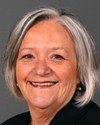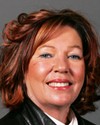You've asked a very interesting question. It also brings us around to discussing new definitions for the roles that people play in society. I would just like to clarify one thing. When you talk about audio recordings, that is an alternative media format, just as braille and large print are alternative formats. Depending on a person's needs and his or her preferred way of reading, he or she may have various options to choose from.
At the moment, what you say is correct. In my role as a voter—and I say "my", because I am also a visually impaired individual—in my role as a taxpayer, I do not necessarily have access to the documents in the medium I would like to use or need. You spoke about older individuals who prefer audio recordings. Others may prefer braille, because audio recordings are difficult as well, and present different issues. At the federal level, the CRA had put out two calls to tender for the adaptation of documents into braille. By some twist of fate, neither call for tender proved successful in terms of locating a producer, and, in the end, no service was offered. As a result, the service is available in audio only.
The situation is somewhat similar for other issues as well. Of course, this is all related to the question of reasonable accommodation as well. That is the context of this entire debate. Federally, I remember that Elections Canada had approached me two or three years ago to see how the ballot could be adapted from coast to coast to coast, in the 308 ridings, if I remember correctly. I was asked how this could be done. Naturally, I made some suggestions, but there was no follow-up on this either.
So I think there is a great deal of work that needs to be done on that score.




